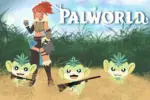Easter eggs and in-game glitches have always been one of the most discussed topics within video game communities. Easter eggs are secrets coded into a game that players try to find — or seem to stumble upon — that make the game seem even more alive and exciting. And while glitches are parts of the game that don’t work as the programmers intended, they can still be fun in their own way, especially if they are exploitable. News of both Easter eggs and glitches are passed around among fellow players to create a new sense of camaraderie. I mean, who doesn’t like a bit of harmless cheating every now and then?
Easter Eggs
The first Easter egg in a video game was found in a 1979 Atari game titled Adventure. It all started with programmer Warren Robinett, who simply wanted to make his personal and permanent mark on the game. If you can even tell what’s going on in the video of the Easter egg, the small dot of the player character navigates through rooms until finding a small dot that acts as a key to a secret room. After running through a few more steps, the player ends up in a room with Robinett’s name listed as the creator of the game. Robinett explained that he was bothered by the way Atari didn’t honor their programmers with any kind of recognition.
At the time, companies like Activision had honored their programmers by putting their names directly on cartridges and added pictures of the programming team in the instruction booklet for the game. He added this Easter egg to Adventure in order to get recognition, and in part to make a point to Atari about crediting its workers. He’s definitely made his mark, and Easter eggs have become a huge part of gaming culture that still stands to this day. Creator references can be seen in many other games too, like Noob Saibot from Mortal Kombat being a splice of its creators’ names, Ed Boon and John Tobias.
The most popular kinds of Easter eggs these days are the ones that reference other aspects of pop culture, especially other games. For example, Skyrim pays a quiet tribute to Minecraft with a hidden weapon called the Notched Pickaxe, a reference to Minecraft’s former lead designer, Markus “Notch” Persson. One of the most popular references that has been reused in countless video games is the Konami Code, a lengthy combination of button commands that will probably sound familiar to any gamer. Up, Up, Down, Down, Left, Right, Left, Right, B, A has become very recognizable, even if we don’t remember much about its induction.
Kazuhisa Hashimoto — the creator of the code — admitted that he added the code into Konami’s game Gradius to make play-testing a bit easier. The release of Contra, which also features the Konami Code, allowed the cheat code to enter the mainstream after it was published in an issue of Nintendo Power. Since then, it has become the most referenced Easter egg in video game history. In Assassin’s Creed 3, performing the code while feeding a turkey will give it the iconic assassin’s hood donned by your character. The code is even referenced in the Disney movie “Wreck-It Ralph” when King Candy uses the Konami Code to open the safe that holds Sugar Rush’s programming and code.
Glitches
Glitches and exploits are another huge part of gaming culture and community. These days, glitches and exploits can be patched almost instantly, as we’ve seen recently with the quick patch of a cloning glitch in Pokémon Brilliant Diamond and Shining Pearl. But before the ubiquity of the internet, when video games were still shipped out to consumers, these glitches couldn’t be changed by developers. In the context of the Easter egg in Adventure, it meant Atari coming to terms with Robinett being immortalized with a short line of text, but with glitches, it can mean something much different. Some glitches that prevent or obstruct gameplay are obviously disliked by fans, but those that are funny or interesting stay in popular memory for a long time.
One of the most popular glitches was one from the first iteration of Super Mario Bros. on the NES. Whenever players reach the end of the level “World 1-2,” they could sneak into a glitch world called “World -1,” which players have since dubbed Minus World. Although the level is just a copy of the level “World 7-2,” here, players are stuck in an infinite loop replaying the level over and over again. Another popular glitch is the character MissingNo. (short for “missing number”) from Pokémon Red and Blue. Players would encounter a glitch Pokémon — if we can even call it that — that would allow for other glitchy exploits like cloning. However, this came at the cost of losing some other aspects of gameplay, since interacting with MissingNo. would confuse the game’s code.
Glitches can sometimes be ignored by companies, most likely as a way to deflect responsibility or even because they don’t think it’s a big deal. However, some glitches become too iconic to let go of.
Starting out as an arcade staple, Mortal Kombat already had many secret characters they had snuck into the game for players to find through hints and clues. Characters like Noob Saibot were Easter eggs in their own way, to begin with, but fighter Ermac was something different entirely. Ermac started out as an in-game glitch, a character whose name was shorthand for “error macro,” which was a signal of a programming error. There was no way for players to know that Ermac’s name was an error code, and he unexpectedly became one of the game’s most popular characters … even though he technically never was one. Fans’ love for Ermac pushed Mortal Kombat creators to add him into the game officially, where he is still one of the most beloved characters in the franchise.
Video game culture comes in many different shapes and sizes and has definitely morphed over the years. From arcade machines to our new 4K compatible systems of choice, gamers have always found ways to connect with each other over the games they love most. Regardless of the gradual evolution of gaming software, two aspects of the medium remain crucial components of gaming culture: Easter eggs and glitches. After all, what’s better to bond over than secrets about these beloved games?
















